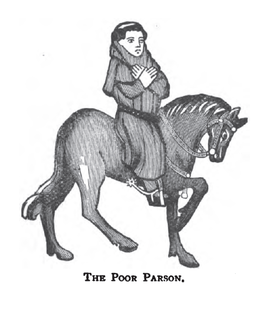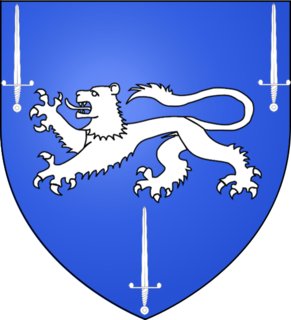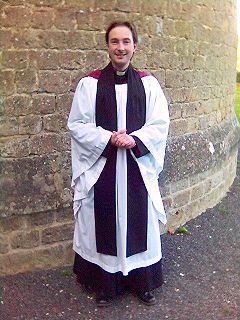
County Clare is a county in Ireland, in the Mid-West Region and the province of Munster, bordered on the west by the Atlantic Ocean. Clare County Council is the local authority. The county had a population of 118,817 at the 2016 census. The county town and largest settlement is Ennis.

The Crown Estate is a collection of lands and holdings in the United Kingdom belonging to the British monarch as a corporation sole, making it "the sovereign's public estate", which is neither government property nor part of the monarch's private estate.

Lisdoonvarna is a spa town in County Clare in Ireland. The town is famous for its music and festivals. Although the music festival was discontinued in the 1980s, Lisdoonvarna still hosts its annual matchmaking festival each September. The population was 829 at the 2016 Census.

Ballyvaughan or Ballyvaghan is a small harbour village in County Clare, Ireland. It is located on the N67 road on the south shores of Galway Bay, in the northwest corner of The Burren. This position on the coast road and the close proximity to many of the area's sights has turned the village into a local center of tourism activity. At the time of the 2011 Census Ballyvaughan had a population of 258. The area was officially classified as part of the West Clare Gaeltacht, an Irish-speaking community, until 1956.

Kilrush is a coastal town in County Clare, Ireland. It is also the name of a civil parish and an ecclesiastical parish in Roman Catholic Diocese of Killaloe. It is located near the mouth of the River Shannon in the south-west of the county. Kilrush is one of the listed Heritage Towns of Ireland. The area was officially classified as part of the West Clare Gaeltacht, an Irish-speaking community, until 1956.

Killaloe is a large village in east County Clare, Ireland. The village lies on the River Shannon on the western bank of Lough Derg and is connected by Killaloe Bridge to the "twin town" of Ballina on the eastern bank of the lake.
A townland is a small geographical division of land used in Ireland and in the Western Isles in Scotland. The townland system is of Gaelic origin, pre-dating the Norman invasion, and most have names of Irish origin. However, some townland names and boundaries come from Norman manors, plantation divisions, or later creations of the Ordnance Survey. The total number of inhabited townlands in Ireland was 60,679 in 1911. The total number recognised by the Irish Place Names database as of 2014 was 61,098, including uninhabited townlands, mainly small islands.

A parson is an ordained Christian person responsible for a small area, typically a parish. The term was formerly often used for some Anglican clergy and, more rarely, for ordained ministers in some other churches. It is no longer a formal term denoting a specific position within Anglicanism, but has some continued historical and colloquial use.
Curtin is a surname which is most common in the Province of Munster in Ireland. It takes several variant forms transliterated from the Irish language, such as: Mac Cruitín, Mac Curtain or Ó Cruitin, most of which are anglicised as Curtin. It is believed there are multiple Curtin families with different origins, the most famous of which is the bardic family which stems from Co. Clare. In the census of 1659 in Counties Cork, Kerry and Limerick similar sounding names such as Mac Curatine and O' Curataine were treated as synonymous although they are not the same clan. Curtayne is a variant surname chiefly in south Munster.

The name McInerney is of noble Irish origin where it is found in the modern Irish form of Mac an Airchinnigh and in the old and literary forms of Mac an Oirchinnigh and Mac an Oirchindig. The pronunciation of Mac an Oirchinnigh led the name to be sometimes anglicised as McEnherheny in Irish documents from the 16th–19th centuries. The name translates to "son of the erenagh" in Irish, literally meaning "son of the Lord of church lands". Airchinneach may in turn derive from the twin components of air ("noble") and ceann ("head"), therefore meaning a ‘noble-head’ or ‘Lord’, denoting its aristocratic status in medieval Ireland. The coat of arms is three red lions passant, and the motto is Veritas, meaning "Truth". In some places, the motto can be found as Vincit Veritas, meaning "Truth Conquers", or "Truth Prevails".
Creagh is an Irish surname derived from the Gaelic Craobhach, meaning "branch". The Creagh family was first found in County Clare, where they held a family seat from ancient times. It is also the name of several locations throughout the island of Ireland, for example:
Tadhg Óg Ó Cianáin (IPA://) was an Irish writer.

Mount Temple is a village in County Westmeath in Ireland, about 6.5 km northwest of Moate. It is noted for its golf course of the same name. It was historically called Ballyloughloe. Mount Temple and its 'sister' village, Baylin, form the only two in the parish of Ballyloughloe.

Tulla is a market town in County Clare, Ireland. It is situated in the east of the county, on the R462 and near its junction with the R352, 18km from Ennis.

MacGorman, also known as McGorman, Gorman, or O'Gorman, is an Irish Gaelic clan based most prominently in what is today County Clare. The paternal ancestors of the clan are of the Laigin and emerged in what is today County Waterford. As leaders of the Uí Bairrche, they competed with the Uí Cheinnselaig in the 5th century for the Kingship of Leinster, ultimately losing out in that specific arena, but holding on to significant lands in the Leinster area.
Niall McInerney was an Irish hurler who played as a right corner-back for the Clare and Galway senior teams.
Clan Barrett is an Irish clan from County Cork that originally descended from Norman invaders who travelled through England and Wales with William the Conqueror in the 12th century, and then into Ireland with Strongbow in the 13th century. They are often thought to be related to the ancestors of the similarly-named Clan Barrett of the mountainous Mayo-Galway areas, who are otherwise considered Gaelic in origin. Of the two, the Cork branch was considered numerically stronger, while the Mayo-Galway branch held more prominence in the Middle Ages.

Vicar is the title given to certain parish priests in the Church of England. It has played a significant role in Anglican Church organisation in ways that are different from other Christian denominations. The title is very old and arises from the medieval arrangement where priests were appointed either by a secular lord, by a bishop or by a religious foundation. Wherever there is a vicar he shares the benefice with a rector to whom the great tithes were paid. Vicar derives from the Latin "vicarius" meaning a substitute.

Killilagh or Killeilagh is a civil parish in County Clare, Ireland. It contains the village of Doolin.

Drumcreehy or Dromcreehy is a civil parish in County Clare, Ireland. It contains the village of Ballyvaughan.













